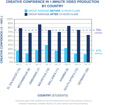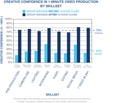
In an attempt to give a voice to the storytellers on the fringes of the digital ecosystem (i.e. Muslim NGO leaders in Germany, citizen journalists in Sri Lanka and public university professors in South Africa) US public diplomats sponsor video training courses: a generous investment in the creative potential of local constituents in foreign countries. Why do American embassies invest in ground-up video diplomacy initiatives abroad, such as video training workshops? How do these government funded programs make a societal and communal impact online and offline?
THE MEDIA EDUCATION GAMBLE
2-year impact study about the creative confidence of video workshop partcipants
by Christoph A. Geiseler





